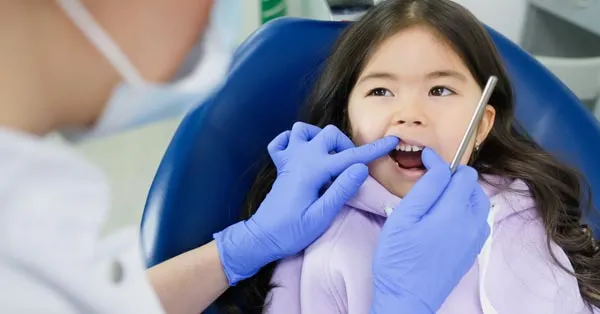Cavities: How and Why Do Dentists Fix Cavities for Children?
Kids are not safe from cavities. This condition should receive immediate treatment before it causes pain to your child. The Woodview Oral Surgery Team
Though children are using a set of teeth they will eventually lose, that set of teeth needs to survive until the adult teeth guide them out of the gums, which helps ensure the adult teeth grow in correctly and with enough room. That's why oral hygiene is important as soon as a baby's teeth begin to come in, and teaching oral hygiene should begin at a young age. Despite your best efforts to ensure good dental hygiene, sometimes kids end up with cavities. Cavity care for children is very similar to cavity care for adults, because preserving tooth health is the most important aspect.
Baby Teeth Get Fillings
Though baby teeth aren't permanent, they are the only teeth your child will have for several years, until the adult teeth come in. To preserve your child's oral health, your dentist will opt to drill out the cavities in baby teeth and fill or crown them accordingly. The primary teeth help the adult teeth to come in properly, so losing primary teeth before they're ready to come out isn't good for your child's permanent teeth.
Filling for Tooth Decay
As with adult teeth, baby teeth fillings are made out of either white composite or metal. The other filling and crown materials, like gold and ceramic, are rarely as fillings for children. Metal fillings are a popular choice because they take less time to put in, and because they're less expensive than composite fillings. Though your kid might not like the look of a metal filling, choosing a cost-effective option for a tooth that will eventually fall out is usually the smart move. Your dental insurance may also dictate what kind of fillings your child can get.
Your dentist will drill the tooth decay from your child's baby teeth as necessary. Depending on how much damage the cavity has caused, the dentist will then fill the tooth or create a crown. Kids should continue using good oral hygiene when caring for fillings or crowns, whether those repairs have been done on baby teeth or on permanent teeth.
Decay Can Recur
Though your dentist works very hard to remove all the tooth decay, sometimes it is a recurring issue. Teeth with cavities between them, even with decay removal and fillings, have a better chance of cavity recurrence than teeth with cavities on exposed surfaces. When decay comes back, the dentist will need to replace the filling to take care of the new decay and re-fill the tooth.
Trauma and Other Issues Also Require Fillings and Crowns
Tooth decay is just one reason kids need fillings. If trauma has happened to the tooth to cause a crack, a filling is necessary as well. Other issues include incorrectly shaped teeth, underdeveloped teeth, and teeth which have chipped. Dentists often opt for crowns on both front and back teeth instead of fillings in these instances, as the crown can provide more complete correction to the damaged or misshapen tooth than a filling could.
Sometimes Extraction Is Necessary
Preserving baby teeth is an important part of dental care for children. The reason revolves around maintaining the right amount of space for the adult teeth to come in. However, sometimes your dentist will have no choice but to pull the baby tooth early. If the decay is so advanced it's causing gum issues or pain for your child, extraction becomes the best option. Many dentists fill the gap where the extracted baby tooth was removed with a prosthetic to maintain the correct space for the adult tooth to come in.
Kids Sometimes Get Laughing Gas
When children are having cavities filled, dentists sometimes opt to use nitrous oxide, commonly called laughing gas. If you've ever experienced this gas at the dentist before, you may remember the sensation that it provides. For some children, nitrous oxide reduces anxiety and distracts them from the pain associated with both getting that Novocaine shot in the gums and getting a tooth drilled. Nitrous oxide doesn't work for all kids, and your dentist may opt to go with an orally administered sedative, instead. And of course, as with many things, not all dentists offer nitrous oxide, so it's best to check beforehand.
The Number of Fillings in One Sitting Depends on the Kid
When dentists fix cavities for kids, sometimes they do all the cavities at once and sometimes they do only one at a time. The reason for this has to do with the kids, not the cavities. Some children are fine sitting in the chair for long periods of time, while others are not. Dentists want the best outcome for the kid, and if that means making multiple appointments to fill cavities, then that is what will happen. Providing quality oral care to a crying child is very difficult for both the kids and the parents.
If you're anxious about your child's first filling, our dentists will put you at ease. We develop a treatment plan that is right for you and your child, with an aim to preserve the baby teeth until the adult teeth come in. The most important thing you can do as a parent is to keep teaching your kids about proper oral hygiene and continue scheduling regular professional teeth cleanings to minimize fillings and more invasive care.






5 Stars
based on 48 reviews
5 Stars
based on 15 reviews
5 Stars
based on 11 ratings